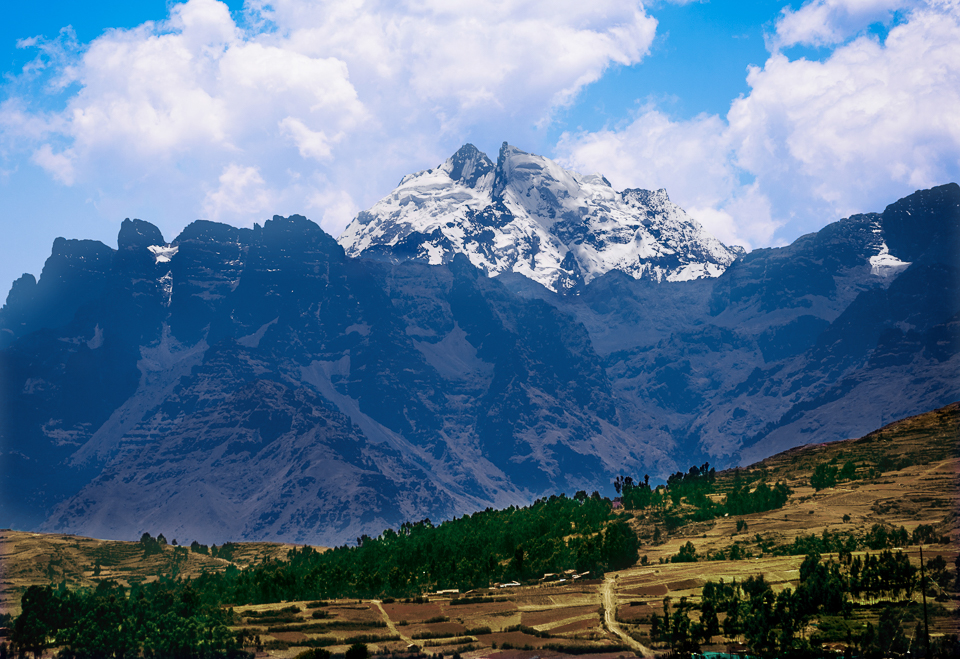
Must human greed forever prevent us from preserving civilization’s most precious artistic and natural treasures? We’re witnessing an administration in Washington that blatantly places corporate profits above all else. And our environment, including the country’s national parks, is under assault like never before.
A Threat to the Sacred Valley
But greed is widespread. Imagine our alarm upon reading multiple reports about Peruvian President Martín Vizcarra’s determination to put Peru’s lovely Sacred Valley and the unique Incan ruins of Machu Picchu at grave risk. His plans to build a multi-million dollar international airport near the small market town of Chinchero (a center of indigenous weaving situated between Cuzco and Machu Picchu in the Sacred Valley) would damage the heartland of Inca civilization. It would attract commercial development and bring even more tourists to already overcrowded Machu Picchu—a 15th-century Inca citadel, UNESCO World Heritage Site and one of the Seven New Wonders of the World.

Global protests, including numerous articles in science journals and travel magazines, have condemned the project. Hundreds of Peruvian and international archaeologists, historians and anthropologists have sent President Vizcarra letters urging him to cancel the project. After all, it’s projected the new airport could quadruple tourists to the region to 6 million from 1.5 million annually—approximately 10 times the limit set by UNESCO!
Abel Traslaviña, a Peruvian archaeologist and Ph.D. student in Vanderbilt University’s Department of Anthropology, has said on NPR’s All things Considered that the airport “poses an irreversible threat to the already fragile Incan ruins and surrounding areas.”
He’s one of nearly 50,000 people, including archaeologists, historians and anthropologists, who have signed a petition launched by art historian Natalia Majluf urging President Vizcarra to block plans for the airport and find it a new home. The petition reads, “The airport endangers the conservation of one of the most important archaeological sites in the world. It will affect the integrity of a complex Inca landscape and cause irreparable damage due to noise, traffic and uncontrolled urbanization.”
Sonia Goldenburg’s editorial for the NY Times (July, 2019) reads: “UNESCO can no longer remain impervious to a rising chorus of worldwide outrage. It should add Machu Picchu to the World Heritage Danger List until Peru fulfils its commitment to preserve the greatest pre-conquest relic of the Americas. … But it seems the Peruvians are driven to ruin, in one generation, what the Spanish conquistadors could not destroy in 300 years of colonial rule.”
She continues: “Traditional communities have not been consulted about the impact the airport would have on their livelihoods. They haven’t had the opportunity to voice their concerns. … Their rights are being violated for the financial gain of the corrupt few.”
But, so far, all has been to little avail. Construction on the controversial Chinchero International Airport began in early 2019. Bulldozers are already clearing the site at the mouth of the Sacred Valley to make way for the new terminal that is expected to become the nation’s second-largest and most modern hub, accommodating more than 7 million passengers per year and replacing Cuzco’s apparently “outdated” airport some 20 miles away.
More Theats to the Environment
Does this sound all too familiar? You bet! In America, our own environment is under siege also. The United States no longer complies with the Paris Agreement, the international initiative signed by 196 states and the European Union, to monitor and take steps to reduce global warming. Here, the current administration is moving full steam ahead to minimize the authority and powers of the Environmental Protection Agency, put clean air and water at risk, support fossil fuel producers and slow down the conversion to clean, renewable energy. Additionally, our national parks remain underfunded.
Further afield, we learn that large tracts of the precious Amazon rain forest are burning as a result of preventable, man-made activities. According to Brazil’s National Institute for Space Research (Inpe), we are seeing the highest number of fires since 2010 and a 76% increase over the same period in 2018 (the first 8 months of the year). NASA also confirms that 2019 has been the most active year for almost a decade.
Exhausted? We are. And this list of troubling issues is just the tip of the iceberg! Should you have time, add your voice—in any way possible in your community—to the growing number of people protesting the environmental destruction that’s now moving forward at an unprecedented pace.
